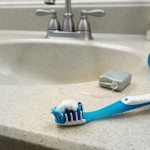
The presence of orthodontic appliances is known to influence plaque accumulation which increases the importance of good oral hygiene measures. Periodic oral hygiene instruction and motivation may enhance patients self-performed behaviours. Interventions based on recognised behavioural change techniques are considered to be more effective than traditional technique focussed approaches.
The main aim of the review was to evaluate the effectiveness of behavioural change techniques (BCTs) on individuals undergoing orthodontic treatment.
Methods
Searches were conducted in the Medline/PubMed, Scopus and CENTRAL databases this was supplements by hand searches in the journals, Journal of Clinical Periodontology, Journal of Periodontology, Journal of Orthodontics, International Journal of Dental Hygiene. Randomised controlled trials (RCTs) evaluating behavioural techniques on individuals undergoing orthodontic therapy were considered. Two reviewers independently screened and selected studies, extracted data and assessed risk of bias using the Cochrane risk-of-bias tool (RoB 2). Data were pooled for qualitative and descriptive analysis.
Results
- 10 RCTs involving a total of 1017 patients (10-25 yrs. of age) were included.
- Studies were published between 2011 and 2019.
- 4 categories of intervention were included, mobile phone communication ( 5 studies), motivational interview (2 studies) repeated oral hygiene instructions( 1 study) visual-aided approach (2 studies).
- 9 studies were considered to be at high risk of bias and 1 at low risk.
- All test interventions appear to have improved oral hygiene behaviours.
Conclusions
The authors concluded: –
Within the limitations of the available evidence, plaque and inflammatory outcomes of young adults undergoing fixed orthodontic therapy seem to be positively influenced by all the four kinds of approaches described. Nevertheless, due to the heterogeneity of outcome measure assessment, it was not possible to identify the strategy achieving the best results in terms of plaque and gingivitis reduction. To overcome the limitations observed, future randomized clinical trials should be designed adjusting the follow-up to the time of the orthodontic treatment. Moreover, important clinical aspects, such as the implementation of oral hygiene measures with interproximal devices and the assessment of periodontal outcomes through widely used indices, should be taken into account.
Comments
The authors had pre-registered their review on the PROSPERO database and followed the (Preferred Reporting Items for Systematic Review and Meta- Analyses) PRISMA statement. Only RCTs involving more than 10 patients and having more than 3 months follow up were included. 10 RCTs were included with all but one being at high risk of bias and the heterogeneity of outcomes measured meant that no meta-analysis could be conducted. It was noted that plaque and gingivitis outcomes were measured using 9 different scales which highlights a need to agree the use of common outcome sets to facilitate the combination of studies in the future. The authors also highlight that 6 of the studies only initiated the interventions once the appliances were in place and only 1 study followed the patients after the appliances had been removed. So, while the available studies suggest positive benefits from BCTs the poor quality of the available studies and the high degree of methodological variation makes interpretation of the findings challenging. Further high quality well reported studies are needed in order to provide more definitive answers.
Links
Primary Paper
Discepoli N, Mirra R, Marruganti C, Beneforti C, Doldo T. Efficacy of Behaviour Change Techniques to improve oral hygiene control of individuals undergoing orthodontic therapy. A systematic review. Int J Dent Hyg. 2021 Feb;19(1):3-17. doi: 10.1111/idh.12468. Epub 2020 Oct 15. PMID: 32974991.
Other references
Dental Elf – 2nd Dec 2020
Powered toothbrushes and plaque control in orthodontic patients
Dental Elf – 20th Sep 2019
Oral hygiene advice: Use of mobile phone applications in children and adolescents
